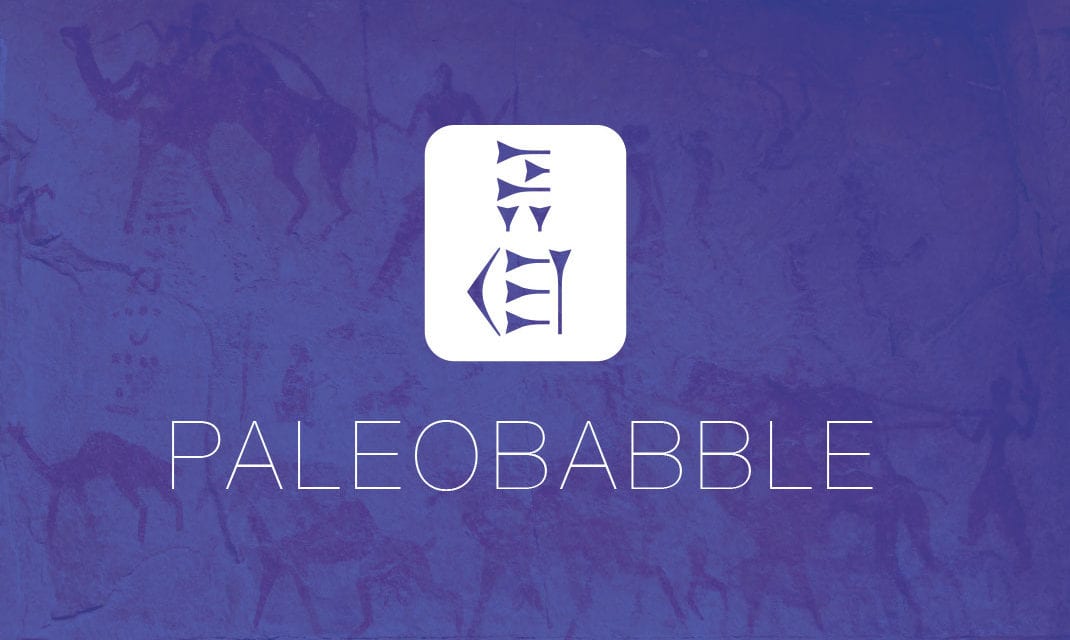The Oriental Institute of the University of Chicago recently posted a new volume in the Oriental Institute Seminars series: Heaven on Earth: Temples, Ritual, and Cosmic Symbolism in the Ancient World (Edited by Deena Ragavan). You can download the book as a PDF for free here (click on the down arrow next to “terms of use”).
Here is the Table of Contents – some good stuff here!
Introduction
1. Heaven on Earth: Temples, Ritual, and Cosmic Symbolism in the Ancient World. Deena Ragavan
Part I: Architecture and Cosmology
2. Naturalizing Buddhist Cosmology in the Temple Architecture of China: The Case of the Yicihui Pillar. Tracy Miller
3. Hints at Temple Topography and Cosmic Geography from Hittite Sources. Susanne Görke
4. Images of the Cosmos: Sacred and Ritual Space in Jaina Temple Architecture in India. Julia A. B. Hegewald
Part II: Built Space and Natural Forms
5. The Classic Maya Temple: Centrality, Cosmology, and Sacred Geography in Ancient Mesoamerica. Karl Taube
6. Seeds and Mountains: The Cosmogony of Temples in South Asia. Michael W. Meister
7. Intrinsic and Constructed Sacred Space in Hittite Anatolia. Gary Beckman
Part III: Myth and Movement
8. On the Rocks: Greek Mountains and Sacred Conversations. Betsey A. Robinson
9. Entering Other Worlds: Gates, Rituals, and Cosmic Journeys in Sumerian Sources. Deena Ragavan
Part IV: Sacred Space and Ritual Practice
10. “We Are Going to the House in Prayer”: Theology, Cultic Topography, and Cosmology in the Emesal Prayers of Ancient Mesopotamia. Uri Gabbay
11. Temporary Ritual Structures and Their Cosmological Symbolism in Ancient
Mesopotamia. Claus Ambos
12. Sacred Space and Ritual Practice at the End of Prehistory in the Southern Levant. Yorke M. Rowan
Part V: Architecture, Power, and the State
13. Egyptian Temple Graffiti and the Gods: Appropriation and Ritualization in Karnak and Luxor. Elizabeth Frood
14. The Transformation of Sacred Space, Topography, and Royal Ritual in Persia and the Ancient Iranian World. Matthew P Canepa
15. The Cattlepen and the Sheepfold: Cities, Temples, and Pastoral Power in Ancient Mesopotamia. Omur Harmansah
Part VI: Images of Ritual
16. Sources of Egyptian Temple Cosmology: Divine Image, King, and Ritual Performer. John Baines
17. Mirror and Memory: Images of Ritual Actions in Greek Temple Decoration. Clemente Marconi
PART VII: Responses
18. Temples of the Depths, Pillars of the Heights, Gates in Between. Davíd Carrasco
19. Cosmos and Discipline. Richard Neer





What’s funny is I’ve been downloading free pdf’s like crazy on this very subject using Google Scholar for the past two days so this was an enjoyable surprise! Thank you, sir!
I guess while I’m here: (1)Are there any scholarly articles on the meaning of numbers in ANE? I already have Numerology and the New Testament you provided on the Naked Bible a couple of years ago.
(2) Are there any articles about the possibility of Genesis 3 and the curse of the serpent being a defense of Hezekiah’s reform and his removing the brass serpent from the temple?
and (3) I downloaded your Myth draft, read it, loved it; but my laptop died and the original link doesn’t seem to work anymore. Is there anyway I can get another copy of that? (or even better: when does the actual book become available so I can buy it?)
Thanks, again!
Email me about the Myth draft. The answer to your other questions is “sure” – but do you have access to journal databases or live near a library that subscribes to the relevant academic journals so you can get the articles for free?
Just recently, yes! I’ve felt like a kid in a candy store. I finally got my hands on Kee’s “Heaveny Council and Its Type-Scene” with it. Something I’ve been wanting to get my hands almost since I first came across your divine council site.
Hopefully, it will clear some things up with the ‘standings’ and the ‘sittings’ and the ‘in front of’s and the ‘midst’s; because some of the arguments I’ve read from various people seem contradictory. Like the Head sits in the center of the council but Yahweh can’t be the head because it says He is ‘in the midst’ instead of ‘in front of.’ The center seems pretty ‘midst’ to me but, whatever.
Kee’s article is a good one – enjoy it!
Hello Mike, and thanks for hooking us up to this very interesting read.
you’re welcome!
Sorry, South Asia did not have ancient temples. Indian temples are all medieval. If you include them you must include European medieval cathedrals too, which are the same age as the oldest Indian temples. Otherwise you are just encouraging the Indian hindu-nationalist nonsense, believe me I’ve heard enough of the latter to fill a garbage truck. It also encourages pseudo-science.
Perhaps you should read the material first. I’m guessing the person who wrote that essay would be surprised to hear your thought. I’ve read lots of material on the Hindu nationalist Vedic origins problem. No one publishing with Chicago is going to be pushing an agenda and pseudo-science.
Research needs to be done to bring out the story of Psychic Edgar Cayce and the history of his “Law of One” monotheistic religion of Atlantis. The history of the monotheism beliefs in Atlantis go back in time the ten-million years that Edgar Cayce describes in his readings. A good area for research in human origins.